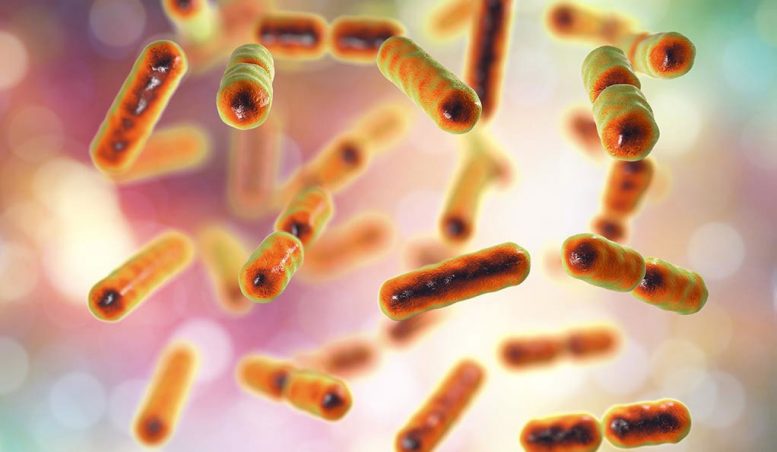Sugar can silence a key protein required for colonization by a gut bacterium associated with lean and healthy individuals, according to a new Yale study published the week of December 17 in the journal Proceedings of the National Academy of Sciences of the USA.
The gut microbiota plays a key role in human health, and its composition is associated with diet. Until recently, scientists believed that sugar was absorbed into the intestine and never reached the gut. However, recent studies have shown sugar can travel to the colon, where the microbiota resides.
“Given the high consumption of sucrose and fructose in the Western diet, we wanted to know what effect it was having on the composition of the gut microbiome,” said Eduardo A. Groisman, the Waldemar Von Zedtwitz Professor of Microbial Pathogenesis and senior author of the research.
Groisman and colleagues studied the effects of a high sucrose/glucose diet in mice on one of those beneficial bacteria, Bacteroides thetaiotaomicron, a species associated with the ability to process healthy foods such as vegetables.
They found that both fructose and glucose, which together form sucrose, block the production of a key protein called Roc, which is required for the colonization of this beneficial bacterium in the gut. When researchers engineered a strain of the bacterium that did not silence Roc in response to fructose and glucose, the engineered strain had a colonization advantage in the guts of mice on a high sucrose/glucose diet.
“The role of diet in the gut microbiota goes farther than just providing nutrients,” Groisman said. “It appears that carbohydrates like sugar can act as signaling molecules as well.”
Yale’s Guy Townsend is the first author of the study, which was primarily funded by Yale University and the National Institutes of Health.
Reference: “Dietary sugar silences a colonization factor in a mammalian gut symbiont” by Guy E. Townsend II, Weiwei Han, Nathan D. Schwalm III, Varsha Raghavan, Natasha A. Barry, Andrew L. Goodman and Eduardo A. Groisman, 17 December 2018, PNAS.
DOI: 10.1073/pnas.1813780115










In this article, this paragraph has some troubling statements.
“They found that both fructose and glucose, which together form sucrose, block the production of a key protein called Roc, which is required for colonization of this beneficial bacterium in the gut. When researchers engineered a strain of the bacterium that did not silence Roc in response to fructose and glucose, the engineered strain had a colonization advantage in the guts of mice on a high sucrose/glucose diet.”
No where was it stated that the bacterium silenced Roc. However the researchers produced a strain of the bacterium that did not silence ROC. Very odd.
Reading the abstract at the provided link shows why the article is unclear, it is heavy on jargon and obfuscation. It is obvious the authors need to get out more (though it may be a result of USian English teaching).
I edited the abstract for my own comprehension and attached it below.
“The composition of the gut microbiota is largely determined by environmental factors including the host diet. Dietary components are believed to influence the composition of the gut microbiota by serving as nutrients to a subset of microbes, thereby favoring their expansion.
We now report that dietary fructose and glucose, which are prevalent in the Western diet, specifically silence a protein that is necessary for gut colonization (but not for utilization of these sugars) by the human gut inhabitants Bacteroides thetaiotaomicron. Silencing by fructose and glucose requires the 5′ leader region of the mRNA specifying the protein, designated ROC for Regulator Of Colonization. Incorporation of the ROC leader mRNA in front of a heterologous gene was sufficient for fructose and glucose to turn off expression of the corresponding protein. An engineered strain resisting ROC silencing by these sugars outcompeted wild-type B. thetaiotaomicron in mice fed a diet rich in glucose and sucrose, but not in mice fed a complex polysaccharide-rich diet.
Our findings underscore a role for dietary sugars that escape absorption by the intestine and reach the microbiota in the colon.”
The writer slaughtered the article through their poor understanding of the basic terms; e.g., sloppy and false juxtaposition of ‘gut’ vs ‘intestine’,and lack of understanding of the location of the biota.